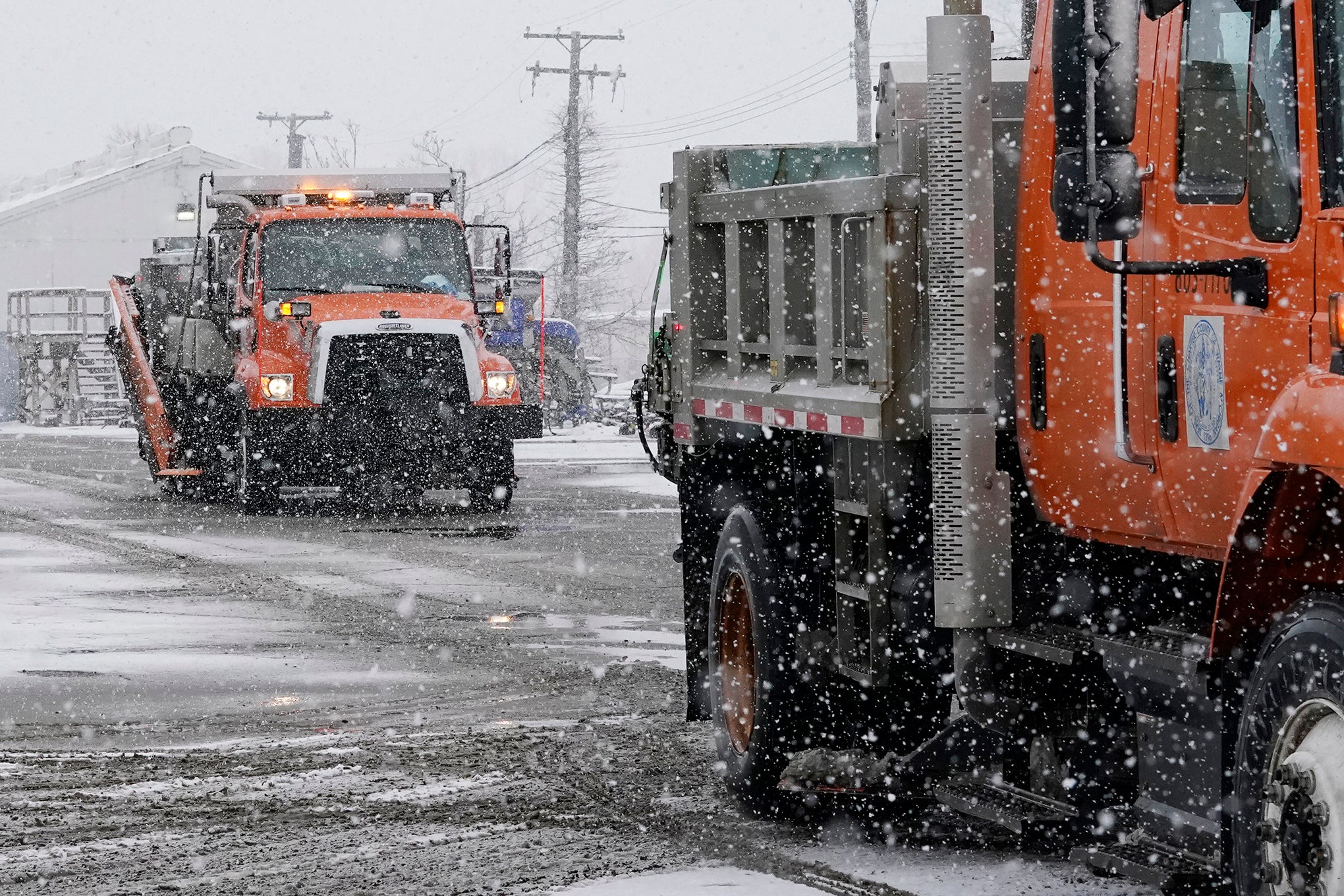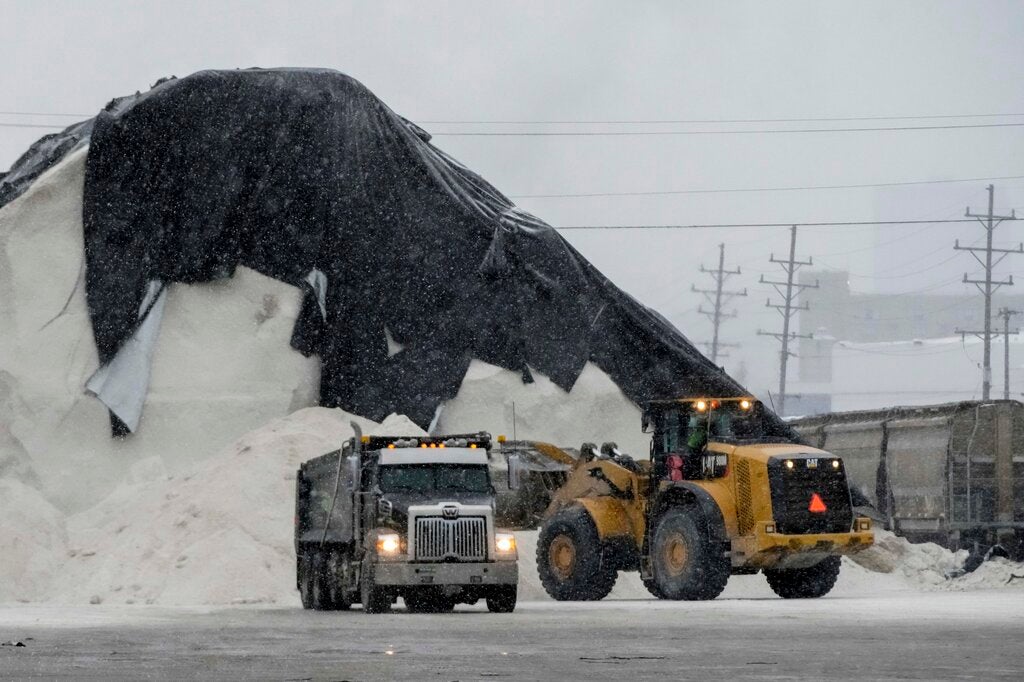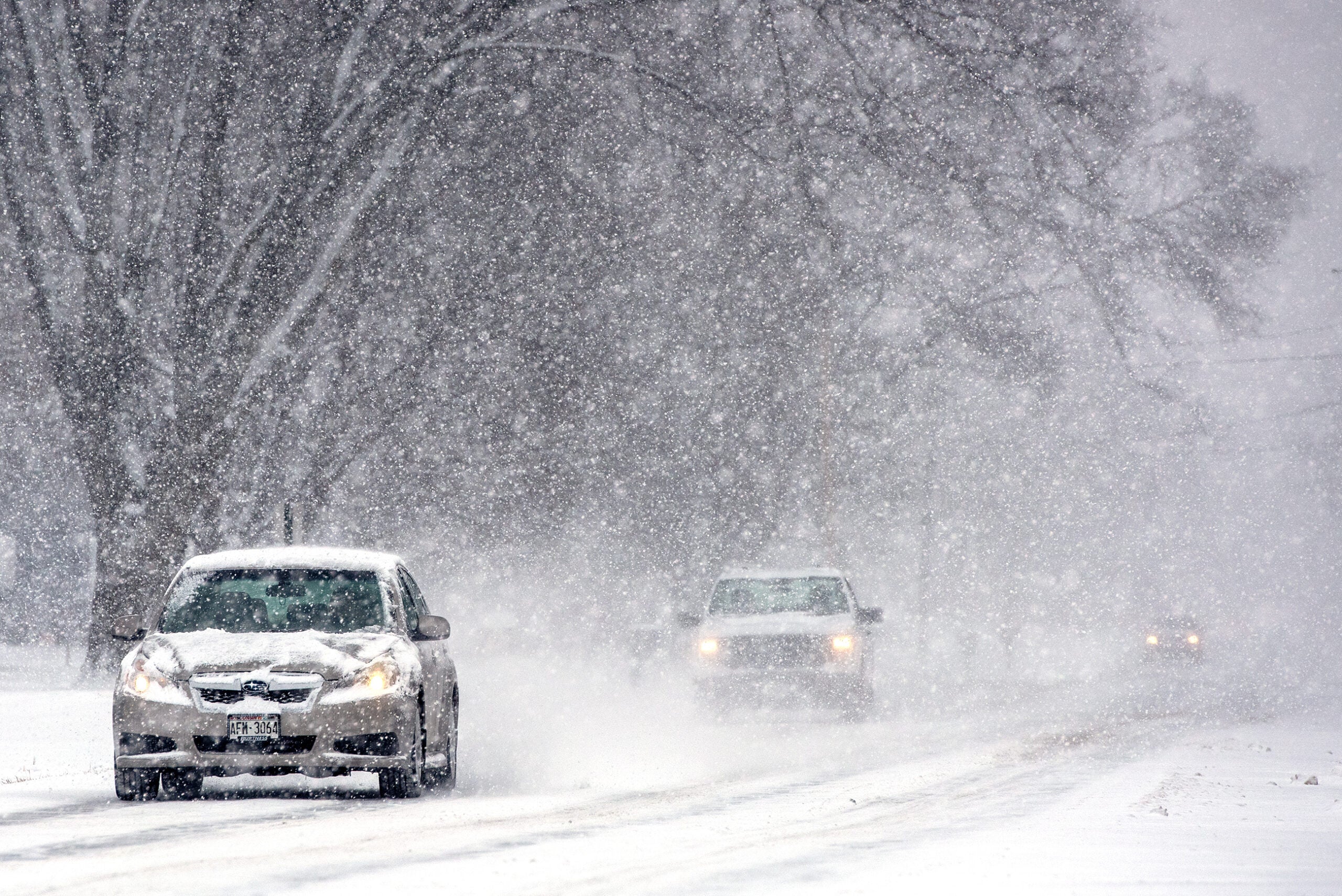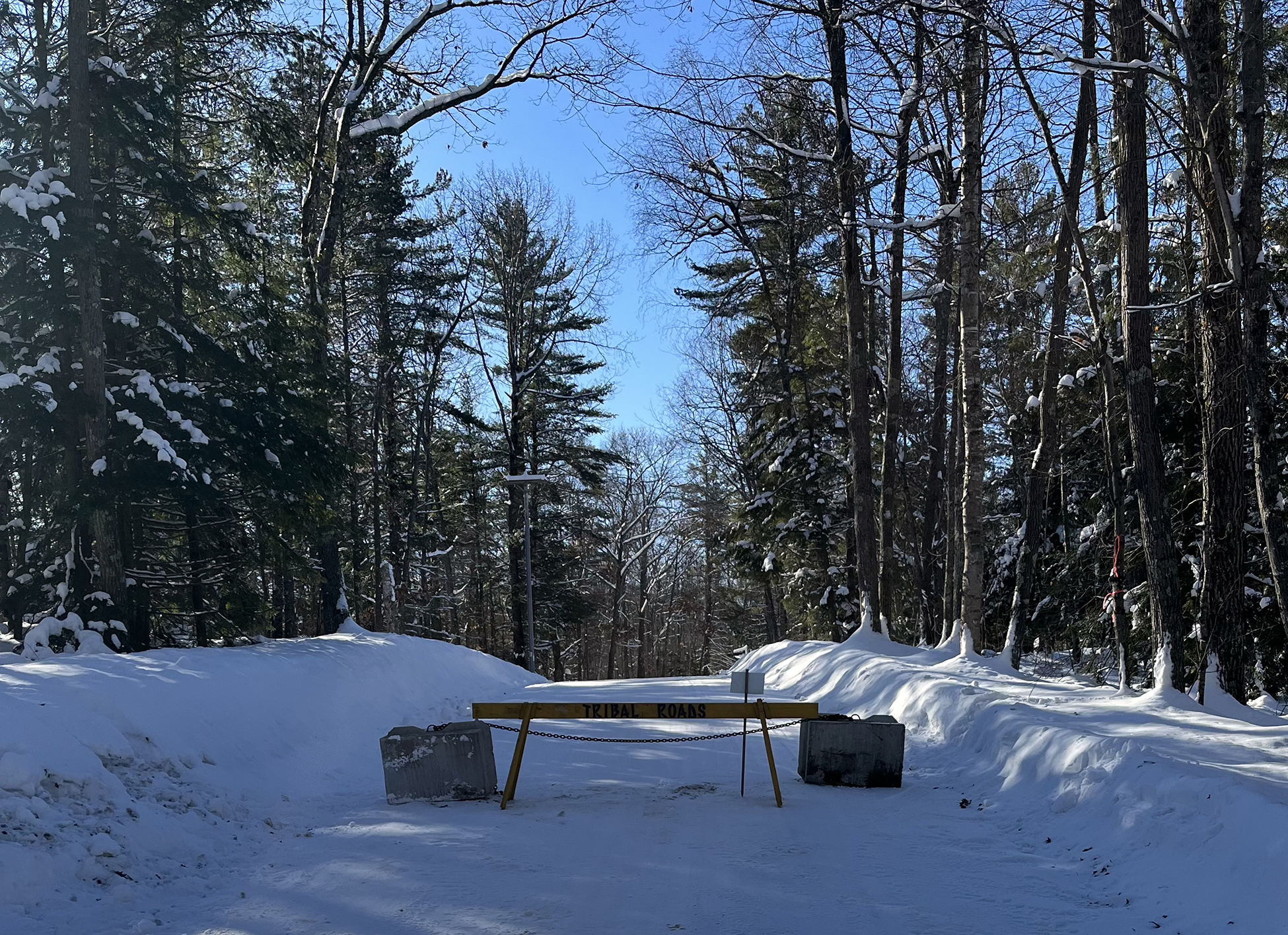Community leaders in Wisconsin are increasingly turning to liquid brine, a mixture of salt and water, to minimize environmental and safety concerns and manage winter road conditions.
“I think there’s a lot more momentum and discussion about it today than there was even five years ago,” said Shannon Haydin, stormwater section manager for the Wisconsin Department of Natural Resources.
She said road salt, also called rock salt, can blow off of roads and into the state’s waterways.
News with a little more humanity
WPR’s “Wisconsin Today” newsletter keeps you connected to the state you love without feeling overwhelmed. No paywall. No agenda. No corporate filter.
“There’s nothing that removes chlorides from the water. And as we get saltier water, it begins to impact the aquatic biology, the plants and the fish and the bugs that live in the lake,” Haydin said.
Haydin said areas that use road ditches instead of storm sewers are at risk of the saltier water infiltrating soil and groundwater. In other cases, people on a low-sodium diet could be consuming salt in their water without realizing it. Rock salt is also corrosive and damages infrastructure. Nationwide, it costs about $5 billion a year in repairs, according to the U.S. Environmental Protection Agency.
“It’s really everywhere right now, and it’s going up at an alarming rate. And right now is the time to really slow that down so that we can limit the negative impacts that we have on our water quality,” Haydin said.
Instead, more street maintenance operators are using brine, made of 23 percent salt and the rest water. Depending on weather conditions, winter weather professionals use brine before a storm by putting liquid down on pavements, also called anti-icing, or combining salt and brine after a storm to de-ice the roads.
In 2018, Matt Wittum, a highway superintendent for the Town of Linn — south of Lake Geneva — bought a livestock watering tank to make about 1,000 gallons of salt brine. He also replaced an older fleet with new trucks with applicators that can spray brine and temperature sensors for operators to make adjustments based on how much brine is needed. The new system saved 400 tons of salt and $25,000-$30,000 for the 2021-2022 winter season, according to Wittum.
“An insanely small percent of this planet is freshwater, and 1 teaspoon of salt contaminates 5 gallons of drinking water permanently. There’s no way to turn that around. And we need to be more responsible with what we do,” he said.
Now, he’s teaching others how to make brine. And Walworth County’s public works department is selling and hauling brine to other municipal agencies.
“Our county will sell you the brine and haul it to your facility with their truck,” Wittum said, “so you just need that tank and pump and you could be utilizing salt brine.”
The Wisconsin Department of Transportation partners with all 72 county highway departments to maintain some 35,000 miles of state, federal and interstate highways, said Emil Juni, winter maintenance engineer for the agency.
“Salt brine activates on the road faster than salt because salt needs to be wet for it to help melt the ice,” Juni said. “Using brine is less slippery than using just rock salt.”
A recent study by the DOT found that on average, liquid salt cleared roads two hours faster than rock salt.
Juni said the DOT has visited counties to raise awareness about the effects of salt and ways to more efficiently manage snow and ice control. The agency has also allocated $9 million over the past five years to county highway departments for the purchase of high-capacity brine makers. So far, that has funded about 50 different brine makers.
“We have been extremely successful ever since our salt reduction initiative for the past few years,” Juni said, adding that total salt use per lane mile across the state’s highway system is at a 30-year low, even though it slightly rose last year.

Allison Madison, the program manager of Wisconsin Salt Wise, educates winter maintenance professionals on salt reduction methods and how to use brine with equipment. She said while the cost of salt has steadily increased, it’s still relatively cheap.
Madison said communities under financial pressure can recoup the costs of buying equipment because they’re using less salt when they switch to brine.
“There is no silver bullet here. Brine is very helpful in that it’s enabling us to reduce the total use of salt, but brine still is salt,” she said.
Still, upfront costs, storage space and a lack of knowledge in how to use equipment and apply materials effectively are some barriers for municipalities. Haydin of the DNR said the state is working to provide low-interest loans to communities to cover equipment costs and training needs. She said the DNR is also thinking of ways to help businesses adopt salt reduction strategies.
Lawmakers push to reduce excess road salt application
In January, state Sen. André Jacque, R-De Pere, and state Rep. Elijah Behnke, R-Oconto, introduced limited liability legislation that would protect businesses documenting their salt practices against potential slip-and-fall lawsuits. The bill also calls for a DNR-sponsored program, self-funded by fees from voluntary participants, to earn a de-icer applicator certification.
“What it hopefully means for Wisconsin residents is fresher water, less damage to infrastructure, and really some smart training on best practices that are going to protect public safety and hopefully reduce some of the cost related to ice and snow maintenance in Wisconsin,” Jacque said.
Jacque said he thinks over-salting is a result of fear over potential “financial ruin.”
“It’s something where those that are investing in, taking and implementing the training, will see the benefit of peace of mind knowing that essentially, they’ve done what they can to limit their financial risk from a lawsuit,” Jacque said.
The legislation has received bipartisan support and earned praise from environmental groups.
“It sets a framework for a certification program for people who are applying salt in winter during winter maintenance so they’re trained on the right place, right time,” said Haydin of the DNR. “And then, once they’re certified, it is provided that they follow the process, and they also document what they’ve done. If there is a slip and fall claim, the applicator would ultimately not be held liable.”
Wisconsin Public Radio, © Copyright 2026, Board of Regents of the University of Wisconsin System and Wisconsin Educational Communications Board.



